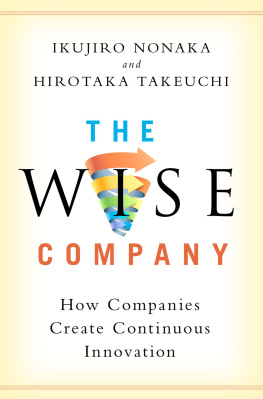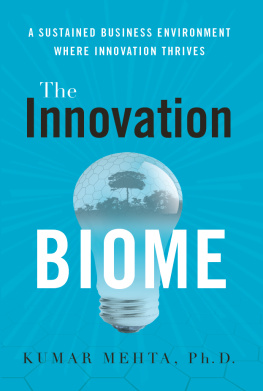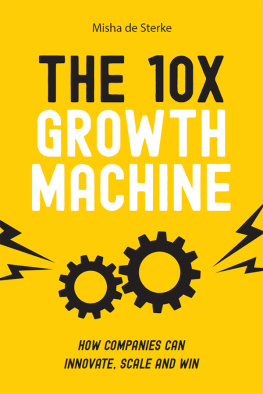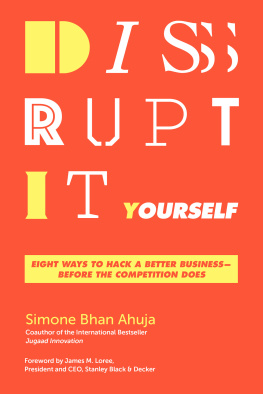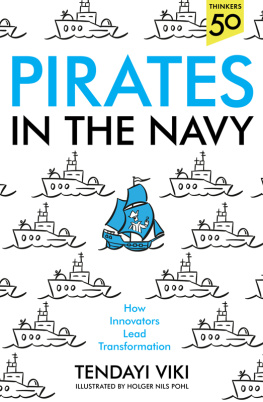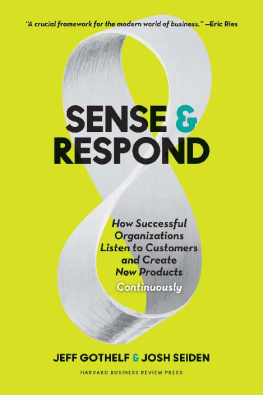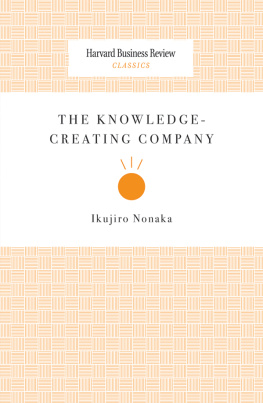The Wise Company

Oxford University Press is a department of the University of Oxford. It furthers\the Universitys objective of excellence in research, scholarship, and education\by publishing worldwide. Oxford is a registered trade mark of Oxford University\Press in the UK and certain other countries.
Published in the United States of America by Oxford University Press
198 Madison Avenue, New York, NY 10016, United States of America.
Oxford University Press 2019
All rights reserved. No part of this publication may be reproduced, stored in\a retrieval system, or transmitted, in any form or by any means, without the\prior permission in writing of Oxford University Press, or as expressly permitted\by law, by license, or under terms agreed with the appropriate reproduction\rights organization. Inquiries concerning reproduction outside the scope of the\above should be sent to the Rights Department, Oxford University Press, at the\address above.
You must not circulate this work in any other form\and you must impose this same condition on any acquirer.
Library of Congress Cataloging-in-Publication Data
Names: Nonaka, Ikujiro, 1935 author. | Takeuchi, Hirotaka, author.
Title: The wise company : how companies create continuous innovation /
Ikujiro Nonaka and Hirotaka Takeuchi.
Description: New York, NY : Oxford University Press, [2020] |
Includes bibliographical references and index.
Identifiers: LCCN 2018059906 (print) | LCCN 2019003435 (ebook) |
ISBN 9780190497019 (updf) | ISBN 9780190497026 (epub) |
ISBN 9780190497002 (hardcover : alk. paper)
Subjects: LCSH: Knowledge management. | Strategic planning. |
Organizational change. | Total quality management.
Classification: LCC HD30.2 (ebook) | LCC HD30.2 .N6624 2020 (print) |
DDC 658.4/038dc23
LC record available at https://lccn.loc.gov/2018059906
To the youths who will come after uscontinuously searching for knowledge and wisdom.
CONTENTS
The concepts we postulated are globally accepted today. In 2013, an article in a British management journal, Knowledge Management Research & Practice, ranked The Knowledge-Creating Company as the most cited reference work between 2003 and 2012 in the field of knowledge management. In the same year, a well-known Japanese business magazine, Weekly Diamond, ranked our book as the number one management book that will continue to be read 100 years later.
The publication of The Knowledge-Creating Company sparked the knowledge movement among management scholars, and resulted in the birth of the field of knowledge management. Until the mid-1990s, mainstream organizational theories and research focused on information,
Over the past 25 years, we have expanded the field of knowledge management by:
and Knowledge-Based Strategy at the Harvard Business School.
writing books, such as Enabling Knowledge Creation (Von Krogh, Ichijo, and Nonaka, 2000), Managing Flow (Nonaka, Toyama, and Hirata, 2008), and Extreme Toyota (Osono, Shimizu, and Takeuchi, 2008).
publishing articles, such as A Dynamic Theory of Organizational Knowledge Creation (Nonaka, Organization Science, 1994), The Concept of Ba: Building a Foundation for Knowledge Creation (Nonaka and Konno, California Management Review, 1998), Contradictions That Drive Toyotas Success (Takeuchi, Osono, Shimizu, Harvard Business Review, 2008), The Wise Leader (Nonaka and Takeuchi, Harvard Business Review, 2010), and Embracing Agile (Rigby, Sutherland, and Takeuchi, Harvard Business Review, 2016).
working with companies such as Fast Retailing (UNIQLO), Seven & i Holdings, Honda, Eisai, and others, as well as government organizations such as Japan International Cooperation Agency, on using knowledge as a competitive advantage. We were also recently credited with being the grandfathers of the agile movement by Jeff Sutherland, the founder of Scrum, Inc., who wrote Scrum: Doing Twice the Work in Half the Time (2014).
In 2018, the two of us celebrated the 10th anniversary of establishing the Nonaka Institute of Knowledge in Tokyo, which annually offers a year-long program for 30 senior leaders of prominent Japanese companies, called the Knowledge Forum.
Given the enormous impact of The Knowledge-Creating Company, why, you may ask, did we wish to write a second book on the same topic after 25 years? There are three reasons. First, although the theoretical basis of knowledge creation has been accepted by academicians, companies, and their leaders, they, especially the latter, are still unsure about how to make SECI work every day in business, or how to take advantage of it. Thus, this book is written for those who need to move from theory to practice, to put knowledge to good use, and to apply knowledge to action. We introduce the SECI Spiral Model in through 9 to escape what we like to call the SECI-stuck syndrome.
Second, we wrote this new book for those who are facing the enormous challenges of implementing the ideas we postulated in a world that has changed dramatically and drastically in the last 25 years. As the world had changed, so has the landscape of knowledge. These developments include the following:
Globalization is making it easier for companies to go beyond their borders.
All knowledge is global now, as a consequence.
The Internet, combined with social media and mobile technology, is creating a hyper-linked world.
Knowledge is free, limitless, and personalized (Just Tweet It).
Big Data, Cloud computing, and Artificial Intelligence are creating a trove of data and information.
Knowledge, information, and data are becoming indistinguishable, while information overload is becoming a problem.
Open innovation is making it easier to go beyond the boundaries of the firm.
Knowledge sharing is more prevalent. The Internet of Things is creating a new generation of products, in which every product becomes a service.
Managers need new knowledge skills.
Ecology is becoming an important issue, both for companies and society.
Knowledge is created not only for organizations, but also for ecosystems.
These developments are making knowledge more abundant, global, complex, open, deeper, and connected. Thats why companies must deal with the issue of information overload and must be more careful about harnessing the right kind of knowledge. In our first book, we discussed how knowledge is similar to, yet different from, information and data. Knowledge, unlike information, is about beliefs and commitment. Knowledge is shaped by values, ethics, and morality. Unlike information, knowledge is about action. It is always for some use or end (e.g., fueling innovation). Knowledge, unlike data or information, is about meaning. Contexts and relations with other people or things are the essential components of knowledge. And, in this book entitled The Wise Company, we argue the need for wisdom, a higher-order tacit knowledge, to cope with a fast-changing world.
Third, we wrote this book to refine our knowledge-creating theory, and to make it more robust for scholars who are eager to make an impact on society. We take great comfort in seeing economists interest in the value of knowledge, as well as organizational theorists interest in managing knowledge as an asset. Another positive sign is the inroads made by scholars in strategy, entrepreneurship, information technology, political science, brain science, and other disciplines in the field of knowledge management.

